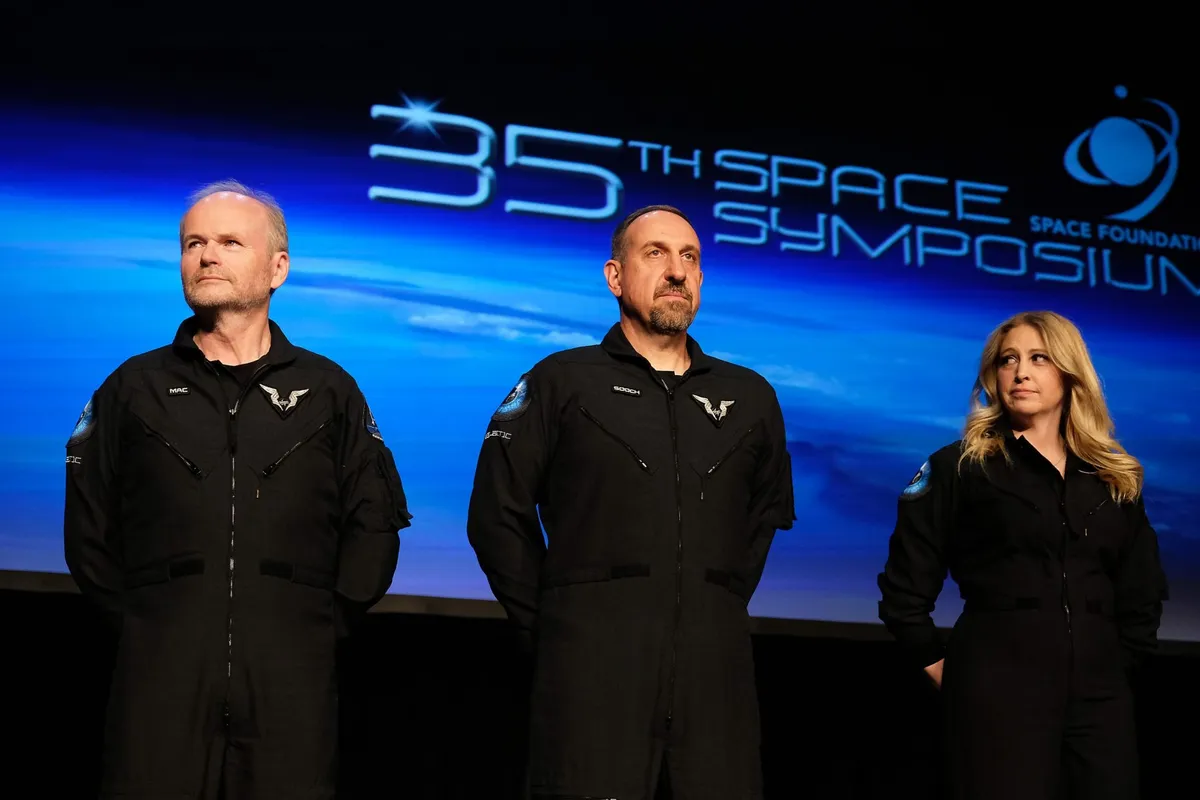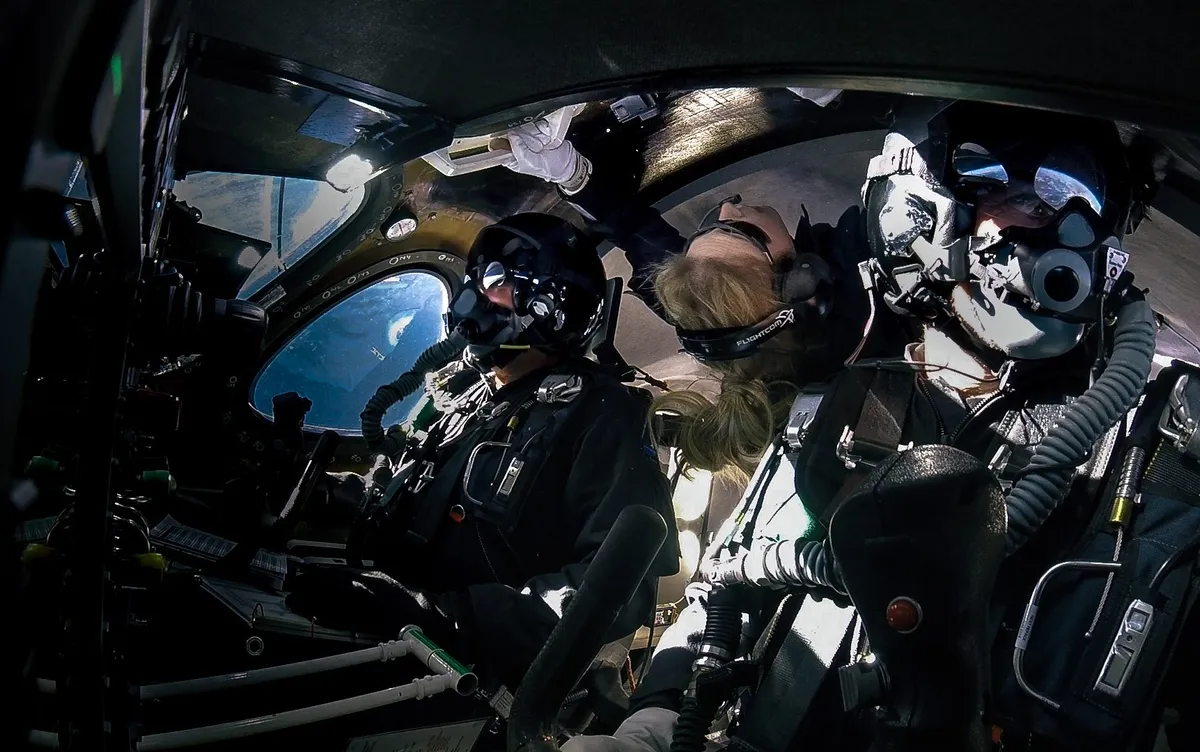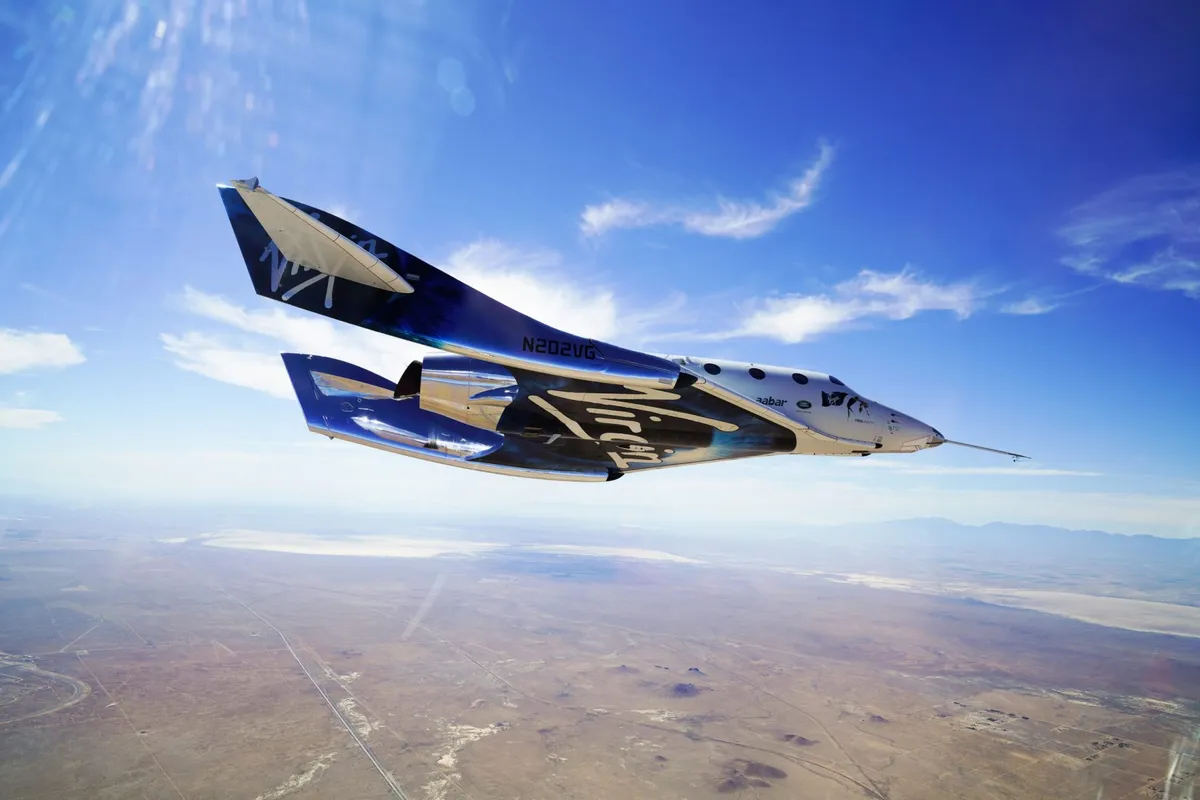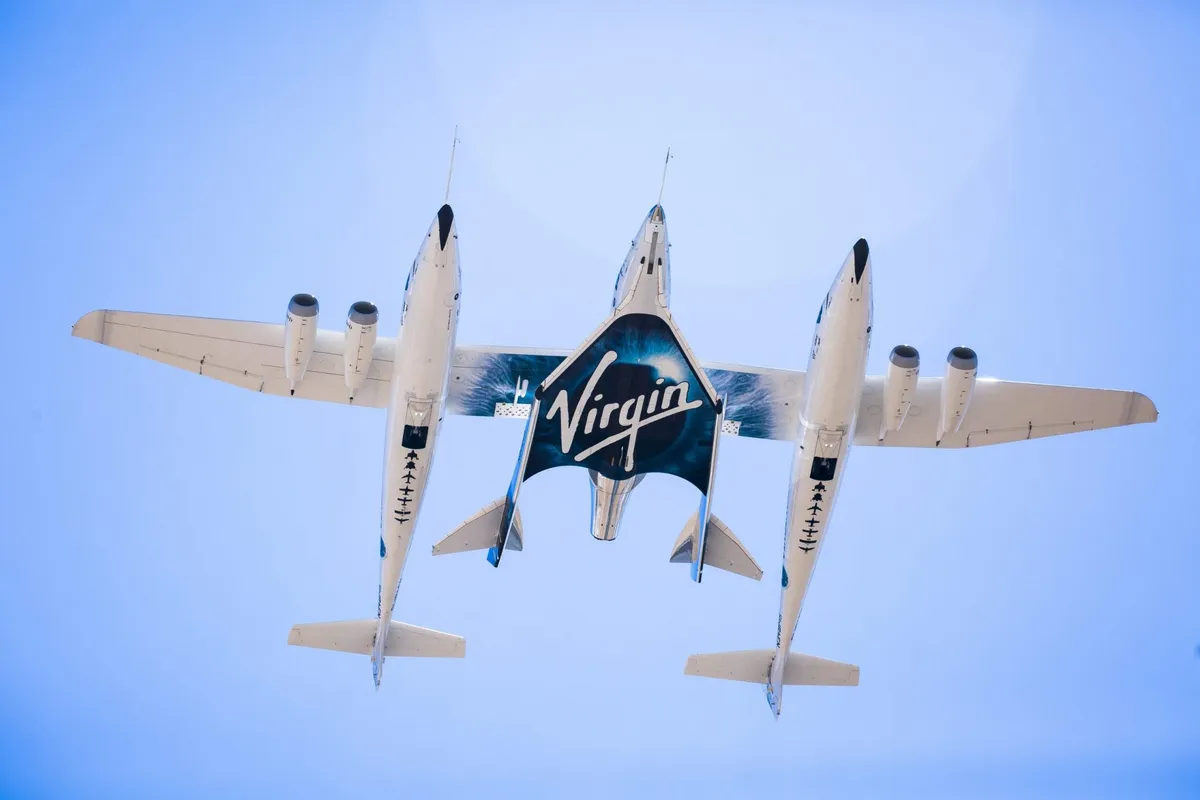As the 569th astronaut and the first “native Scot” in space, 63-year-old David Mackay’s career has been one of flying ever higher and faster. Amassing 14,500 hours in the air in GR3 Harriers with the RAF, as a Boscombe Down test pilot and a Virgin Atlantic captain on Boeing 747s and Airbus A340s, he now leads a team of pilots who are paving the way for private spaceflight participants.
This team will soon be taking commercial passengers in SpaceShip Two to at least 82km (270,000 ft) altitude, where the US FAA defines the start of 'outer space'. This will be at speeds of up to Mach 3.
To get into sub-orbital space, Virgin adopt a 2-stage process where 4-engine carrier aircraft WhiteKnightTwo carries the 8-seater (2 pilots and up to 6 passengers) - SpaceShipTwo spaceplane to about 15,000 metres before releasing it.
Read more:
- What ever happened to spaceplanes?
- A look at the NASA Artemis, SpaceX Crew Dragon and Virgin Galactic spacesuits
The SS2 fires its rocket motor for 60 secs. to take it to above the 82km US-defined 'space' boundary line.
The spacecraft floats in zero-g for approximately 4 mins and then, following the feathering of the SS2’s tail boom and the resulting shuttle-cock stabilising system, the SS2 re-enters the atmosphere.
At just over 15,000 metres the 'feather' configuration is lowered and as a glider the vehicle lands on the long runway at Spaceport America in New Mexico.

The view from space
Mackay's first spaceflight experience occurred in February 2019 when he, co-pilot Michael Masucci and Chief Astronaut Instructor Beth Moses flew in VSS Unity to 89.9 km, enjoying unrivalled views of planet Earth and experiencing almost 4 minutes of microgravity.
All 3 have now been awarded their US FAA astronaut wings.
Carrying 4 automated NASA science experiments, this second test-flight of SS2 into sub-orbital space confirmed the vehicle’s safety and should allow VG to plan to commence commercial operations from this year.
"We manoeuvred the SpaceShip into an upright position, in order to give the microgravity experiments in the cabin as much microgravity time as possible," says Mackay.
"For passengers, we would normally position the SS2 on its back, to maximise the experience of the view.

"The views were quite incredible. There was no haze to affect the appearance of the Earth below and we could see across the US to the north and east, out to the Pacific Ocean to the west and into Mexico to the south.
"We could see so much of the curvature of the Earth that we could sense the scale of the planet. The sky was a deep black and the line of the Earth’s atmosphere so thin."
But did the test flight to space go according to plan?
“The flight exceeded expectations - the vehicle was so still and stationary, with hardly any Reaction Control System (RCS) thruster corrections needed," he says.
"We used hardly any of the RCS tank capacity The rocket motor operated perfectly. VSS Unity was incredibly stable in space and the return to Earth was better than the simulator ride."

Safety matters
Virgin Galactic say they are determined to maximise passenger safety and enjoyment during what is still the early pioneering days of commercial spaceflight.
"A key feature of the 'feathering' of the tail is that there are 2 actuators that provide redundancy, even though the system is extremely unlikely to need this," Mackay explains.
"We can return with the feather down and we practise in the simulator for this."
What of cabin safety and the dangers of accidental depressurisation at sub-orbital heights?
"The hull and window construction is very sound, with double-layer construction and we verify their integrity before launch. We can flood the spacecraft with reserve air from multiple sources if ever needed, plus the crew and passengers have their own emergency oxygen supply, as in an airliner.
"The space participants will have had three days training at Spaceport America, to maximise safety and their enjoyment of the flight. They will unstrap and strap back in easily and we can monitor them from the cockpit.
"The seats are articulated, from the 3g ascent following the 60 sec. rocket motor burn in the upright mode as the SS2 goes vertical, to the weightless and 2g re-entry in reclined mode and then back to upright again for the glide and landing.
"Some participants may, of course, have undergone zero-g parabola flights, an aerobatic aircraft experience, or even tried the NASTAR centrifuge in Philadelphia. This should add to their enjoyment."
Virgin Galactic have made the decision not to equip their passengers with 'launch and entry' suits. The emerging Crew Dragon and Starliner spacecraft and the venerable Soyuz include these suits, as did NASA's Space Shuttle.
The rationale is that there is so much structural margin built into the cabin, safety and redundancy in the pressurisation system and numerous airborne verifications before launch that suits are unnecessary, making the extremely small and only brief decompression risk at high altitude acceptable.
It is understood, however that, Virgin Galactic may be considering providing passenger parachutes on the flights, as a possible safety measure. The Space Shuttle operated this approach.

Future plans
Sir Richard Branson wants to fly to space in 2020 and VG have just invited more ticket applicants to come forward, following the initial 600 sales that have occurred to date.
VG have just advertised for 2 more pilots for SS2 flights. The third vehicle is under construction, with its naming ceremony due soon.
With multiple vehicles in service, in addition to private astronauts, this will offer researchers high quality microgravity on regular and routine flights with 3 to 4 minutes of continuous zero-g.
This is undoubtedly appealing for universities and institutes. At present only 20 sec. periods are possible on aircraft parabola flights.
Virgin Galactic and The Spaceship Company are working on a high speed 'point to point' vehicle that may one day be developed, and Virgin Orbit are soon to operate the Launcher One small satellite launcher from the US and other locations.
As for a possible UK-based future, Mackay is positive.
"Flying from the UK at Spaceport Cornwall at Newquay could be possible," he says. "SS2 can operate over the ocean, plus it can fly in Instrument Flight Rules (IFR) if required. Flying more native Scots into space would be a great idea!"
Nick Spall is a space and science writer.

